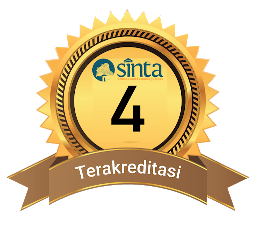Development of Reels-Based Learning Media and Instagram Stories on Electrolyte and Non-Electrolyte Solution Subject Matter
DOI:
10.29303/cep.v8i1.8998Published:
2025-06-03Issue:
Vol. 8 No. 1 (2025): Edisi MeiKeywords:
Learning Media, Instagram Reels and Story, Electrolyte and Non-Electrolyte SolutionsArticles
Downloads
How to Cite
Abstract
A study has been conducted on the development of learning media based on reels and instagram stories on the main material of Electrolyte and Non-Electrolyte Solutions. The purpose of this study. 1). To determine the feasibility of the Instagram application as a learning media on the material of Electrolyte and Non-Electrolyte Solutions at SMA Negeri 1 Wawotobi. 2). To determine student responses to the Instagram application that has been developed as a learning media on the material of Electrolyte and Non-Electrolyte Solutions at SMA Negeri 1 Wawotobi. This type of research is Research & Development (R&D) using the ADDIE development model. The instruments used are assessment/validation sheets (materials and media), teacher responses and student responses. The research sample was 15 grade XI students. The results of this study indicate that: (1) Learning Media Based on Reels and Instagram Stories have gone through the expert validation test stage with an average overall score of 87.74% (2) The student response questionnaire received a positive response with a percentage of 82.77%. From the results of this study, it can be concluded that the Instagram application that has been developed as a learning media that has been developed has very good feasibility and high practicality so that it can be used as a support in chemistry learning activities on the material of Electrolyte and Non-Electrolyte Solutions.
References
Aisyah, R. S. S., Solfarina, S., & Yuliantika, U. (2021). Pengembangan E-Modul Berbasis Pemecahan Masalah pada Materi Larutan Elektrolit dan Non-Elektrolit (ELNOEL). Hydrogen: Jurnal Kependidikan Kimia, 9(1), 19-29.
Alhafidz, M. R. L., & Haryono, A. (2018). Pengembangan Mobile Learning Berbasis Android Sebagai Media Pembelajaran Ekonomi. Jurnal Pendidikan Ekonomi, 11(2), 118-124.
Ambarsari, Z. (2021). Penggunaan Instagram Sebagai Media Pembelajaran Bahasa dan Sastra Indonesia pada Era 4.0. in Prosiding Seminar Nasional Pembelajaran Bahasa dan Sastra Indonesia (SemNas PBSI)-3 (pp. 81-86). FBS Unimed Press.
Arsyad, M., Mujahiddin, M., & Syakhrani, A. W. (2024). the Efficiency of Using Visual Learning Media in Improving the Understanding of Science Concepts in Elementary School Students. Indonesian Journal of Education (INJOE), 4(3), 775-787.
Aryani, I. D., & Murtiariyati, D. (2022). Instagram Sebagai Media Promosi dalam Meningkatkan Jumlah Penjualan pada ADA Souvenir Project. Jurnal Riset Akuntansi dan Bisnis Indonesia, 2(2), 466-477.
Aulia, A., & Andromeda, A. (2019). Pengembangan E-Modul Berbasis Inkuiri Terbimbing Terintegrasi Multirepresentasi dan Virtual Laboratory pada Materi Larutan Elektrolit dan Non Elektrolit untuk Kelas X SMA/MA. Edukimia Journal, 1(1), 94-102.
Branch, R. M. (2009). Instructional Design: the ADDIE Approach (Vol. 722). New York: Springer.
Kadir, E., Alim, M., & Maysara. (2019). Penerapan Pendekatan Saintifik Untuk Meningkatkan Hasil Belajar pada Siswa Kelas X MIA SMAN 1 Lambandia Materi Pokok Larutan Elektrolit dan Non Elektrolit. Jurnal Pendidikan Kimia Universitas Halu Oleo, 4(2). 161-162.
Kartini, K., Syahrina, J., Siregar, N., & Harahap, N. (2022). Penelitian Tentang Instagram. Maktabatun: Jurnal Perpustakaan dan Informasi, 2(2), 20-26.
Maruf, A., Haeruddin, & Saefuddin. (2022). Pengembangan Media Pembelajaran Berbasis Reels dan Story Instagram Guna Meningkatkan Motivasi Belajar Siswa pada Materi Hidrokarbon di SMA Negeri 1 Wawotobi. Jurnal Pendidikan Kimia, 7(1), 1-24.
Ramadani, E. N., Saryantono, B., & Kirana, A. R. (2013). Pengembangan Media Pembelajaran Menggunakan Ispring Suite Bagi Siswa Kelas VIII Sekolah Menengah Pertama. Jurnal Mahasiswa Pendidikan Matematika (JMPM), 4(1), 123-134.
Ria, D. R., & Wahidy, A. (2020). Guru Kreatif di Era Society 5.0. In Prosiding Seminar Nasional Program Pascasarjana Universitas PGRI Palembang.
Ridwan. (2008). Belajar Mudah Penelitian untuk Guru, Karyawan dan Peneliti Pemula. Bandung: Alfabeta.
Rohim, A. M., & Yulianti, D. (2020). Pembelajaran Fisika Berbantuan Aplikasi Instagram untuk Meningkatkan Motivasi dan Hasil Belajar Siswa. UPEJ Unnes Physics Education Journal, 9(2), 149-157.
Sadiman, A. (2014). Media Pendidikan Pengertian Pengembangan dan Pemanfaatannya. Jakarta: Rajawali Pers.
Saifullah, A., Rahmanpiu, & Maysara. (2022). Pengembangan Video Animasi Pembelajaran Kimia Menggunakan Aplikasi Powtoon pada Konsep Ikatan Ionik. Jurnal Pendidikan Kimia FKIP Universitas Halu Oleo, 7(1), 11-12.
Salma, D. K. (2020). Pengembangan Bahan Ajar Berbasis Kontekstual Berbantu Qr Code Pada Mata Pelajaran Praktikum Akuntansi Lembaga/Instansi Pemerintah Kelas XII SMK. Jurnal Pendidikan Ekonomi: Jurnal Ilmiah Ilmu Pendidikan, Ilmu Ekonomi dan Ilmu Sosial, 15(1), 1-8.
Sihotang, B. (2019). Pengembangan Kreativitas Siswa dalam Pembelajaran Berbasis Proyek. Jurnal Pendidikan dan Pembelajaran, 26(1), 34-47.
Sugiyono, D. (2013). Metode Penelitian Pendidikan Pendekatan Kuantitatif, Kualitatif dan R&D.
Wina, S. (2006). Strategi Pembelajaran Berorientasi Standar Proses Pendidikan. Cet e-4, Ja arta, Kencana Prenada Media Group.
Author Biographies
Wadina Wadina, Universitas Halu Oleo
Maysara Maysara, Universitas Halu Oleo
Muh. Alim Marhadi, Universitas Halu Oleo
License
Copyright (c) 2025 Wadina Wadina, Maysara Maysara, Muh. Alim Marhadi

This work is licensed under a Creative Commons Attribution-ShareAlike 4.0 International License.
Authors who publish with Chemistry Education Practice agree to the following terms:
- Authors retain copyright and grant the journal right of first publication with the work simultaneously licensed under a Creative Commons Attribution License 4.0 International License (CC-BY-SA License). This license allows authors to use all articles, data sets, graphics, and appendices in data mining applications, search engines, web sites, blogs, and other platforms by providing an appropriate reference. The journal allows the author(s) to hold the copyright without restrictions and will retain publishing rights without restrictions.
- Authors are able to enter into separate, additional contractual arrangements for the non-exclusive distribution of the journal's published version of the work (e.g., post it to an institutional repository or publish it in a book), with an acknowledgement of its initial publication in Chemistry Education Practice.
- Authors are permitted and encouraged to post their work online (e.g., in institutional repositories or on their website) prior to and during the submission process, as it can lead to productive exchanges, as well as earlier and greater citation of published work (See The Effect of Open Access).






